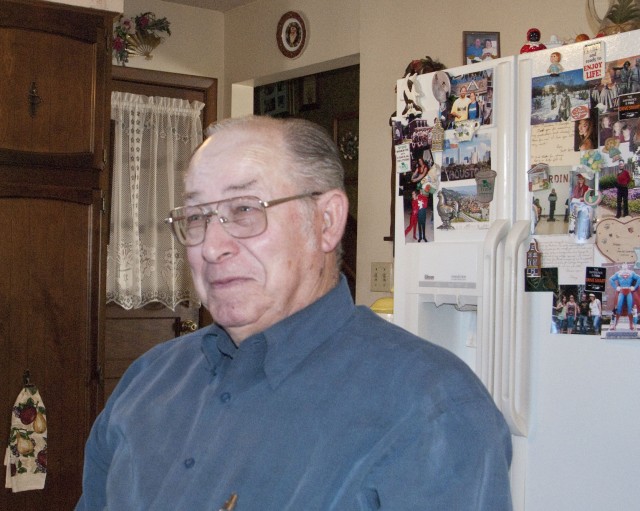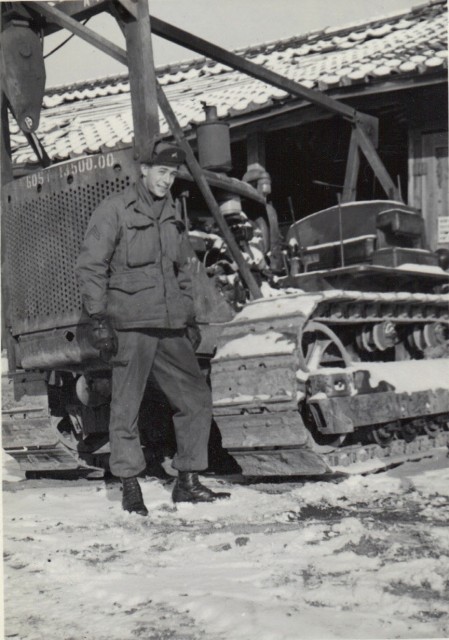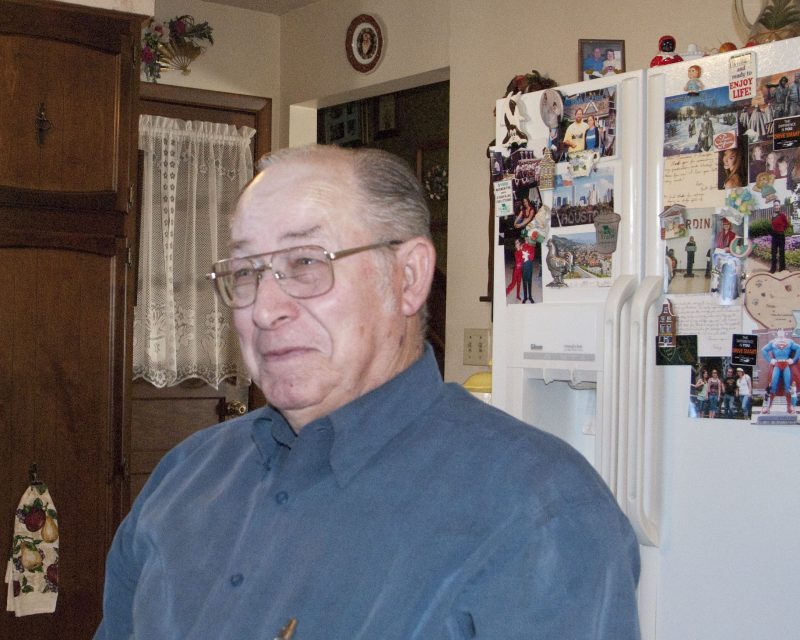Korean War veteran drafted into the Army at the age of 20
By Jeremy P. Ämick
In 1952, Tipton resident Carl Houston was beginning to establish himself—a young man recently out of high school. But the realities of war and vagaries of daily life would soon deliver him a draft notice and two years of military service away from friends, family and a girlfriend who would later become his wife.

Born and raised 10 miles east of Eldon, Mo., Houston graduated high school in 1949 and began working at the Wesseling Jordan Company (shoe manufacturer). In 1951, he transferred to the company’s new Tipton, Mo., facility when the Eldon location closed.
In May 1952, Houston received a draft notice and was inducted into the U.S. Army at Camp Crowder (located near Neosho, Mo).
“I knew that my time was coming,” said Houston. “Everybody my age was going (to Korea) or had already gone.”
Houston was sent to Fort Leonard Wood for nine weeks of basic combat training. “During my basic training we were told that 90 percent of us would be going over to Korea,” Houston recalled.
Shortly thereafter, the newly minted soldier traveled to Fort Belvoir, Va., in order to complete nine weeks of heavy equipment training. As was his suspicion, Houston received notice towards the end of his military school that he would soon deploy to Korea.
When departing Fort Belvoir, Houston was instructed to report to Ft. Lawton, Wash. (just outside of Seattle), in about 20 days. This “delay in route” provided the young soldier the opportunity to return to Eldon for 10 days of leave prior to his pending overseas service during, which he would spend with his family and girlfriend.
During the middle October 1952, Houston reported to Ft. Lawton. “The camp was on the middle of a mountain and you couldn’t see anything for the fog,” said Houston. “You couldn’t see the peak of the mountain above, but you could hear the bellow of the boats in the water below.”

Houston and his fellow soldiers were then moved to Navy Pier 91 where they boarded a troopship on October 25, 1952—his 21st birthday. Although an important milestone in the life of many, Houston lamented, “I never felt like less of a man in my life.”
“Once I got onboard the troopship,” he continued, “I got seasick immediately and spent the next three days in my bunk. I was so sick that I couldn’t event take my boots off!” he laughed.
One of his friends brought him a dry turkey sandwich, which he was able to keep down. After visiting the top deck of the ship and breathing some fresh air, the young soldier began to feel better, though he recalls not feeling “entirely like myself” for the remainder of the trip.
After almost three weeks at sea, the troopship ported in Yokohama, Japan. Houston then boarded a troop train that traveled through Tokyo to Camp Drake where he and his fellow troops received brand new M-1 rifles still packed in grease. At this point, everyone had to clean their rifle to the extent that they were able to get one shot off in order to ensure it functioned properly.
They again boarded the troop train and returned to the port at Yokohama. After boarding the same ship that had delivered him to Japan, Houston and his comrades spent an additional three days at sea before arriving at Pusan, Korea.
From there, Houston boarded another troop train for a three-day trip that would deliver him to a location near Seoul.
“All of the windows had been shot out and it must have had 2-3 inches of slack in every coupling,” joked the veteran, during a discussion about his trip along the rickety Korean rails.
He was then assigned to the 8th Army, 79th Engineer Battalion, beginning a lengthy deployment that would see him living in tents and foxholes with a loaded rifle for a pillow.
During his time in country, Houston operated a bulldozer assisting in the construction of roads, helipads and bridges so to improve upon the country’s infrastructure and support troop movement.
On one occasion, the young soldier would find that even bulldozer operators were considered potential targets for enemy snipers.
Houston’s unit was camped in an area known as “No Man’s Land,” in the process of clearing the site for the construction of an enemy prisoner of war camp.
The campsite was situated on a mound along a river composed of tall grass that would die off every year, fall to the ground, and grow again the next year, eventually forming into several layers of dead, dry grass.
“One day the enemy began firing at us with tracer rounds from across the river and set the grass on fire in the area we were camped,” Houston said. “We had to take the dozers to the top of the hill to put out the fires or else we would be burned out.”
While plowing out the fires with the dozers, enemy soldiers began firing on Houston and the other dozer operators.
“You could hear the bullets bouncing off the dozer, but with the ten-foot blades we were kind of protected,” the veteran said. “Also, you kind of sat down in a ‘nest’ on the dozer, so you weren’t that exposed.”
Houston also remembers the great difficulty his unit encountered in trying to keep their equipment in running order.
“You couldn’t find parts for anything,” he said. “We actually had a sign in our camp that said, ‘We have done so much with so little for so long that now we can do anything with nothing,’” Houston joked.
Towards the latter part of his deployment, Houston received word that he could find all the parts he needed at the 919th Airbase approximately sixty miles from his camp.
“I jumped in a Jeep and drove to the base as fast as I could without getting bounced out,” he recalled. “When I got to the air base I found that it had been bombed the night before and there was nothing left.”
In March of 1954, following seventeen months in country, Houston boarded a troop ship in Inchon, Korea, that would take him to San Francisco. From there he traveled to Camp Carson, Colo., where he received his discharge from the service.
Traveling from Colorado to Eldon by bus, the veteran went back to work at the shoe factory and in April 1955, was married to his pre-service sweetheart, Ellen Enloe.
In 1957, Houston purchased a garage and welding shop in Tipton, which he operated until his retirement in 2002. The former soldier is a member of the American Legion Post 304 and has worked at a local funeral home to keep busy during his retirement.
Although Houston recalls the two Christmas holidays he missed because of his service, what prevails most in his memories is the amount of compensation he received in the Army.
“I started out with $71 a month in pay,” said Houston. “After 17 months, a couple of stripes and combat pay, I was up to $122,” he chuckled.
Jeremy P. Ämick served is writes on behalf of the Silver Star Families of America
Jeremy P. Ämick
Public Affairs Officer
Silver Star Families of America
www.silverstarfamilies.org
Cell: (573) 230-7456
